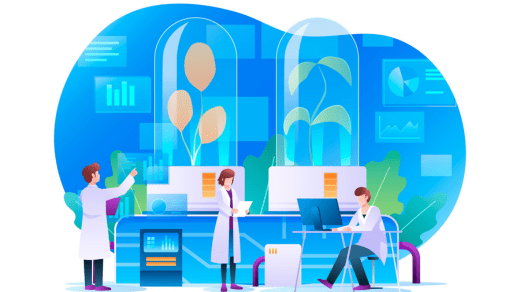
There is no doubt that Golang is a rising star in the world of programming languages. As such, it’s important to understand what makes GoLang great and how it can help you build an app that performs well and scales well.
Golang is a programming language that is growing in popularity
Golang is a programming language that is growing in popularity. It’s used by many companies including Google, Dropbox, Docker and Netflix.
Golang is a general purpose programming language that provides support for concurrency and parallelism at the same level of abstraction as it supports sequential programming.
The Go compiler is designed to be fast: it produces programs with small memory footprint (often 2-4x smaller than what you’d get with similar languages) and can even run on hardware with very limited resources like smart phones or embedded systems like Raspberry Pi boards.
Golang has excellent support for concurrency and parallelism
Golang is a concurrent language, meaning that it has excellent support for concurrency and parallelism. It uses goroutines (lightweight threads) to communicate between threads, and channels to pass data back and forth between goroutines. These two features allow you to write code that runs in the background while other parts of your program continue running without blocking each other.
Golang also supports multiple CPUs, allowing you to scale your application as needed by adding more processors or servers hosting Go processes at any time. This means that if you’re writing an application that needs to be able to handle hundreds or thousands of simultaneous requests simultaneously with minimal downtime then Go might be a good option since it will scale more easily than some other languages such as Python which tend not support multithreading well enough for this type of workload (although there are ways around this).
GoLang: Perfect for Microcontrollers and Resource-Constrained Systems
Golang has a small memory footprint, making it ideal for use on resource-constrained systems like microcontrollers. The ability to store large amounts of data in a small amount of memory can be critical to many applications. For instance, if you’re developing an IoT device that needs to collect readings from sensors and transmit them over Wi-Fi or Bluetooth, the less memory your program takes up the better–and Golang’s small memory footprint makes it ideal for these types of projects.
Golang’s size also makes it well suited for use on embedded devices such as home appliances or wearable technology that often have limited processing power and storage space compared to desktop computers (or even laptops).
There are many open source libraries available for Golang, making it easy to build something yourself.
- There are many open source libraries available for Golang, making it easy to build something yourself.
- You can use these libraries to build your own software.
- Open source libraries are free to use and maintain.
If you’re not looking for a full-blown solution but would rather have more control over your development process and infrastructure, Golang may be a good choice for you.
GoLang: Striking the Balance of Simplicity and Complexity
GoLang’s creators have been able to create a language that balances simplicity and complexity. GoLang is a simple language to learn, with only 28 keywords and a syntax similar to C. The standard library is small, but powerful enough for most everyday tasks.
GoLang has a strong type system that prevents many common errors from happening at runtime (such as null pointer dereferencing or array out-of-bounds access). It also supports reflection, allowing you to get information about your code dynamically at runtime without having to write any extra code yourself!
You can also build high-performance applications using Golang.
Gophers are capable of building high-performance applications using Golang. The language is capable of handling large amounts of data, making it a good choice for real-time systems and web applications.
Golang’s concurrency model makes it easy to write code that runs in parallel on multicore machines, which can lead to significant performance gains over other languages.
GoLang: Powering Critical Software Everywhere
GoLang is used in many critical software systems. It’s used in mobile phones, web browsers and operating systems. If you’ve ever used an Android phone or browsed the internet on a Chromebook, then you have already interacted with GoLang code.
Here are some examples of projects that use Go:
- Android (Google) – https://android-developers.googleblog.com/2016/06/golang-for-android-programmers-and_25388300187720892800html
- Chrome OS (Google) – https://github.com/google/rosta
Hire a Golang Developer for Life Science Software Expertise
If you’re looking for a developer who knows life science software development, you should hire one who knows Golang.
Golang is a great language to use for life science software development because it has all of the following characteristics:
- Easy to learn. Even if you don’t have any experience with programming languages at all, it will take you less than a week to become proficient in Golang. You can learn more about this by reading our blog post “Why Should I Learn Go?” which covers why we think Go is easy enough for anyone with basic computer skills or experience using other programming languages (like C++).
- Small memory footprint. This makes it ideal for running on systems with limited resources such as microcontrollers used in IoT applications or mobile devices like smartphones and tablets–which are often used by customers interacting with your apps! You might be thinking “How small? How much space does this take up?” Well…check out these numbers:
- 32 bit Linux: 33MB; 64 bit Linux/Windows/MacOSX*: 45MB-50MB; ARMv6+*: 4MB-5MB (!!!)
Conclusion
If you’re looking for a developer who knows life science software development, you should Hire Golang Developer. This is a language that will help you build your products faster, with less code and fewer bugs. It’s also an essential skill for any developer who wants to work in the life science industry, and one that will make them more valuable to employers.



